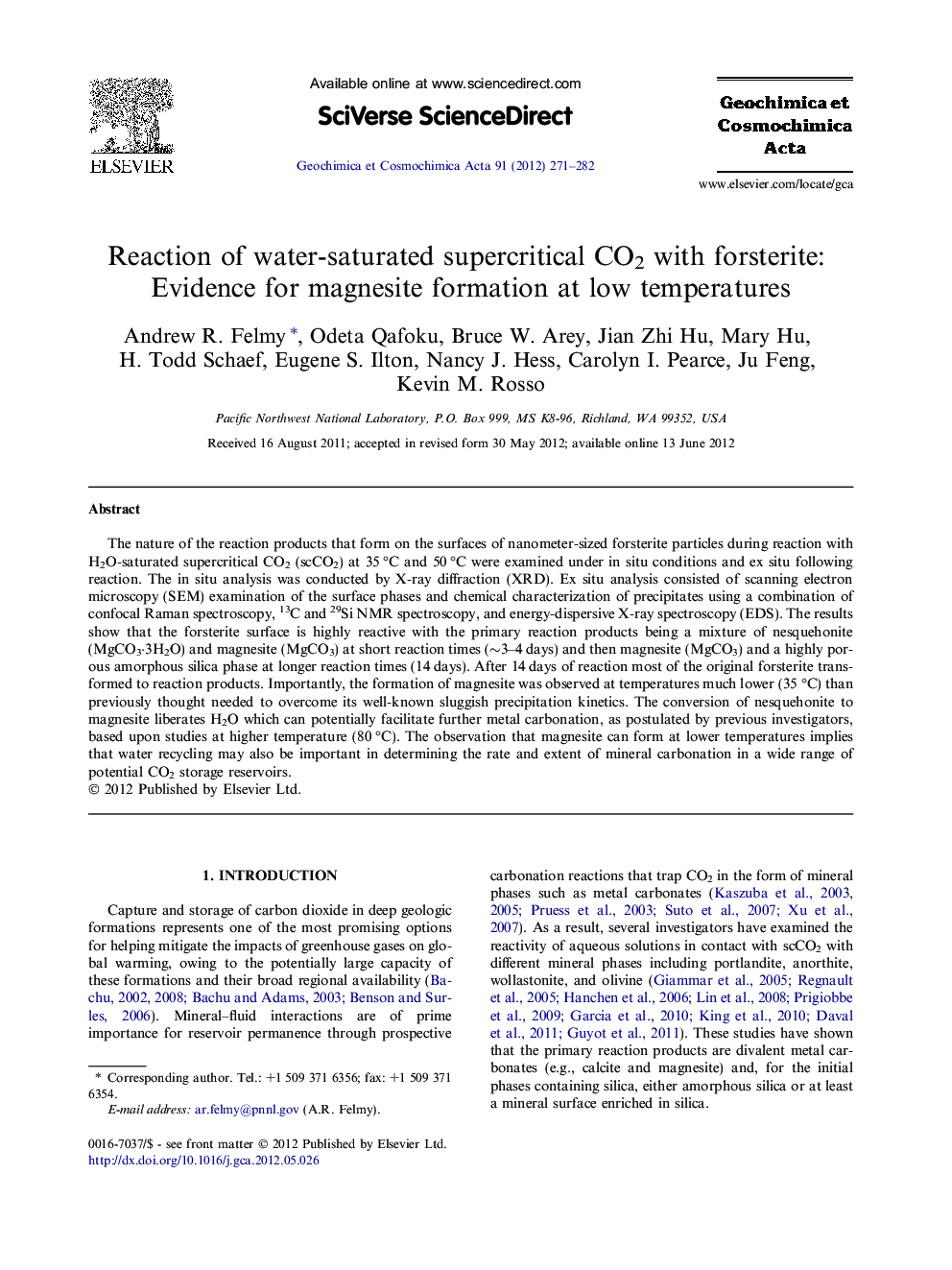| Article ID | Journal | Published Year | Pages | File Type |
|---|---|---|---|---|
| 4702711 | Geochimica et Cosmochimica Acta | 2012 | 12 Pages |
The nature of the reaction products that form on the surfaces of nanometer-sized forsterite particles during reaction with H2O-saturated supercritical CO2 (scCO2) at 35 °C and 50 °C were examined under in situ conditions and ex situ following reaction. The in situ analysis was conducted by X-ray diffraction (XRD). Ex situ analysis consisted of scanning electron microscopy (SEM) examination of the surface phases and chemical characterization of precipitates using a combination of confocal Raman spectroscopy, 13C and 29Si NMR spectroscopy, and energy-dispersive X-ray spectroscopy (EDS). The results show that the forsterite surface is highly reactive with the primary reaction products being a mixture of nesquehonite (MgCO3·3H2O) and magnesite (MgCO3) at short reaction times (∼3–4 days) and then magnesite (MgCO3) and a highly porous amorphous silica phase at longer reaction times (14 days). After 14 days of reaction most of the original forsterite transformed to reaction products. Importantly, the formation of magnesite was observed at temperatures much lower (35 °C) than previously thought needed to overcome its well-known sluggish precipitation kinetics. The conversion of nesquehonite to magnesite liberates H2O which can potentially facilitate further metal carbonation, as postulated by previous investigators, based upon studies at higher temperature (80 °C). The observation that magnesite can form at lower temperatures implies that water recycling may also be important in determining the rate and extent of mineral carbonation in a wide range of potential CO2 storage reservoirs.
